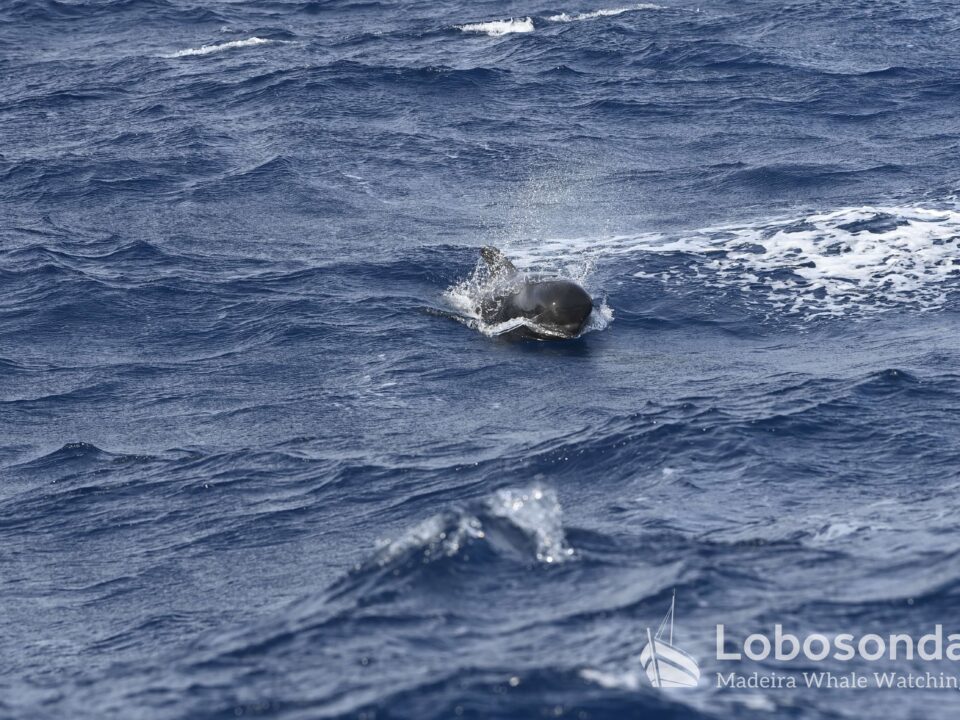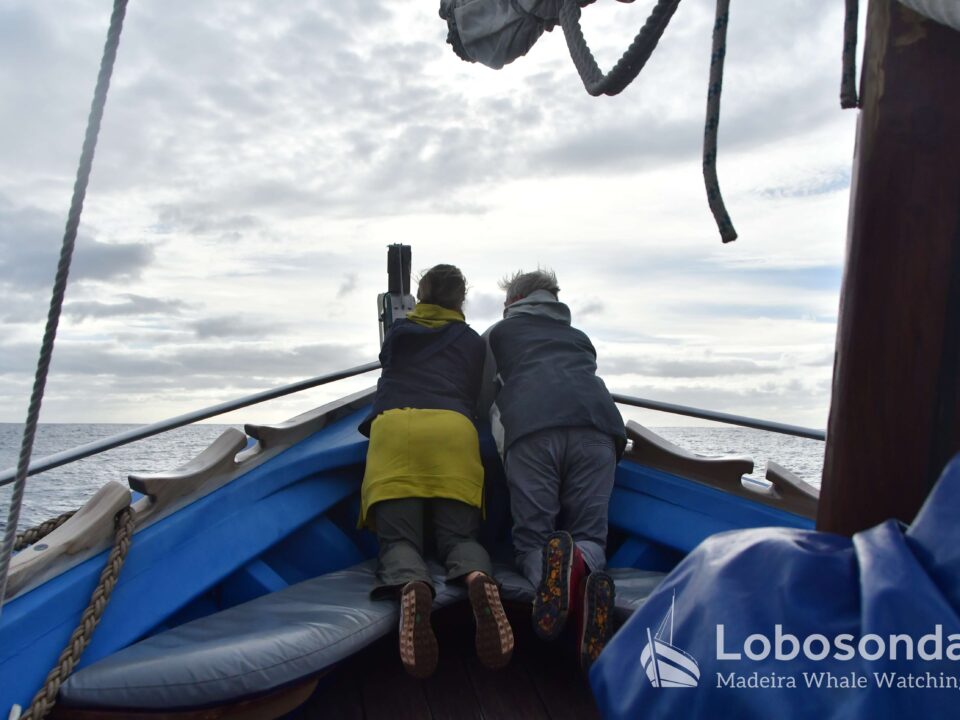
28.09.2021 – A real hero
October 4, 2021
30.09.2021 – 3x Stenella
October 6, 2021Our traditional boat left the marina of Calheta to meet two of the best studied dolphins in the wild; the Bottlenose dolphin (Tursiops truncatus) and the Atlantic spotted dolphin (Stenella frontalis). While our encounter with the group of juvenile spotted dolphins was cut short due to the arrival of several whale-watching boats from the east in the sightings area, we were able to enjoy an amazing encounter with a fairly large nursery group of Bottlenose dolphins.
Such nursery groups are essential introductions to socialising for young calves and are the result of their mothers chosen circle of friends. Within Bottlenose dolphin communities, whether they are coastal or pelagic, individual female dolphins are known to form flexible networks of friendships with other females, which are known to scientists as associates. A female may have preferred associates for activities such as hunting or socialising, and turn to other associates for helping raise her calf. She may also remain with the same associates for all of these life stages or activities so, like with humans, it ultimately depends on the personality and experience of the dolphin.
These relationships are very important. A females ability to raise her calf to independence depends on how successful her fellow associates are at achieving the same thing and studies have shown that this is an even bigger factor than genetic inheritance.
Lately we have had sightings of a female with a little calf with an infection near its dorsal fin. We can only hope that the female has good associates that may help her successfully accompany her calf to adulthood.
By Paula Thake
Sightings of the day
Ribeira Brava
10:00 Atlantic spotted dolphins, Bottlenose dolphins










